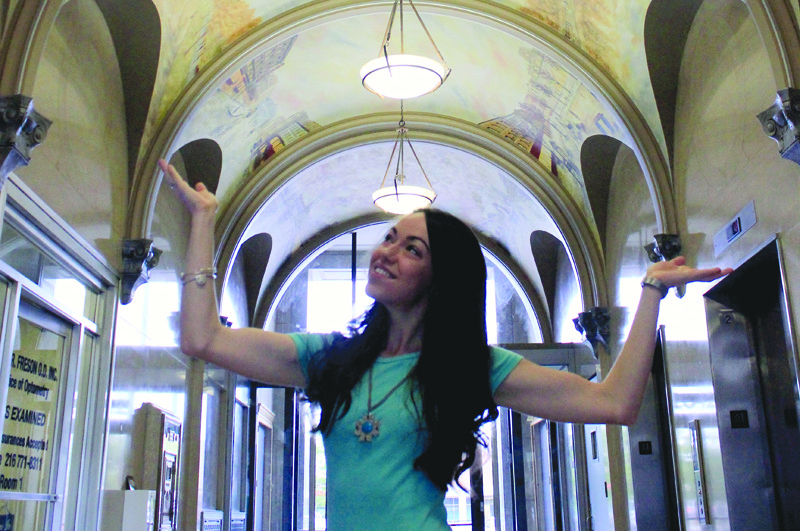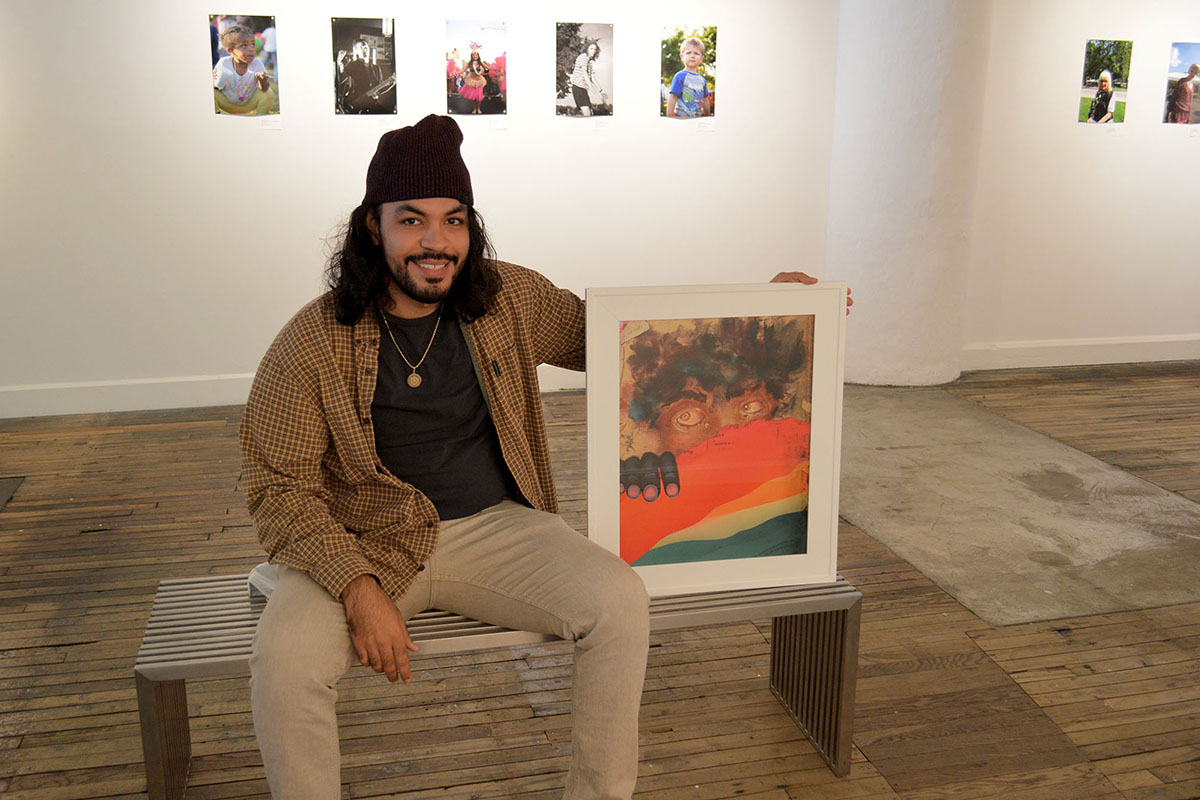Good artistic cheer
By Carlo Wolff
That awful year, 2020, doesn’t seem over quite yet. While it seems to be lifting – slowly – the pandemic continues to define our times, forcing most of us into ourselves to protect each other.
You might think this necessary isolation has curtailed art making and art sales, but that’s not quite the case, according to gallerists, a prolific artist and educator whose creativity continues to quicken, and a collector whose purchases help keep Cleveland’s artistic scene on course.
Hilary D. Gent and Dan Bush’s 78th Street Studios, a large, artistic haven on Cleveland’s near West Side, reopened last June after a few months’ shutdown, and business resumed. The couple found “a small audience of guests and art lovers ‘itching’ for a safe experience,” says Bush.
“This small community is beginning to grow in a very controlled way, but we’re grateful that our guests have been respectful and that courteous friends and new faces are excited to be out, to view and purchase the great art of Northeast Ohio,” he says.
Gent, who is director of HEDGE Gallery at 78th Street Studios, notes one reason HEDGE has been selling art throughout this trying period is the isolation the pandemic demands.
“People were home quite a bit more and looking at their interiors, probably noticing areas that could use some freshening up,” says Gent, an artist herself. “New art definitely has the ability to transform a wall or room. People also weren’t spending money on airfare, trips or dinners out, so perhaps that art purchase they had been putting off came to surface.”
People are buying diverse styles, from abstract to landscape, to figurative and narrative. This isn’t art as comfort food, she stresses. “I’d like to be hopeful in saying that true art appreciation is – finally – on the rise.”
Monica Glasscock, coordinator of Artisans’ Corner Gallery in Newbury, is a veteran framer and self-styled “artoholic.” She says framers and galleries are seeing a resurgence.
“Because we are spending so much more time in our homes, many people are renovating and/or redecorating using funds they would normally spend on travel or eating out,” Glasscock says. “Another factor is the desire to support local and small business whose products are handcrafted and made in America.”
Art that feels safe and speaks to a feeling of home is particularly resonant these shaky days, she suggests. “A depiction that can speak straight to your fond memories can bring a feeling of pure joy,” Glasscock says. “The same can be said for framing personal treasures that are uniquely yours.”
A teaching moment – all year
Sarah Curry has taught art at Charles F. Brush High School in Lyndhurst for 20 years. She relishes interacting with her students. The lockdown the pandemic triggered has taken some adjusting, says Curry.
“Overall, I think artists as ‘makers,’ vs. artists as ‘entrepreneurs,’ have had the upper hand,” she says of this pandemic age. “I’m not sure more artwork has been purchased during this time, but I know we have all witnessed many a blank wall behind participants in Zoom meetings. I was hoping this would encourage others to redecorate and consider living with art since most of their time has been spent at home, and yet we are inviting everyone to see our walls — whether we want to or not.”
From a “maker” perspective, being “forced to stay home and produce rarely feels like punishment,” Curry says, citing “Untethered,” a series she produced before the lockdown, and “Unattached,” created after the lockdown. Her 2018 painting, “Push Pull,” aims to portray the energy and physicality of teen girls. “Little did I know I would soon lose access to these experiences,” she says.

“Once I was cut off from my students and other teen girls, I noticed how quiet and withdrawn my world became,” she adds. “I asked students and daughters of my friends to send me selfies depicting their reaction to the pandemic. Being socially distant is new to us all, but seems contrary to the nature of being a teen. Interacting with one another, bouncing off of each other in the halls, touching each other, forcefully, unintentionally, adoringly – these dynamics hold so much weight, and the narratives sent as well as those perceived help teens find their voice during this tumultuous time in their lives.”
Curry spent part of her alone time experimenting with “flocking,” a technique using the non-reflective medium gouache to “create the illusion of depth with a black so deep it appears as though it almost swallows the girls depicted – an abyss of sorts.
“These works speak to the quiet, lonely void by removing materialistic attachments to the world while fostering the need to connect,” Curry says. “The flocking enhances the depth of what’s missing in the digital age. Removing the background and tangible objects from the image highlights their essence and disconnection from everything and everyone.”

“Underestimated,” which ran at HEDGE from mid-October to the first week of December 2020, was Curry’s first solo show in 10 years. It was unexpectedly successful, drawing both a virtual and in-person audience, and even the flocked work translated to a digital format. It garnered public radio attention and drew the girls in the paintings and their families.
Curry’s art education also flourished even though it was virtual, she explains.
“Despite the cries of a ‘lost year’ in education, many of my students have learned greater lessons than any information conveyed in a traditional learning environment,” she says. “They have learned to be self-sufficient, to be self-motivated, time management and patience. Many students with anxiety or fear, who have been bullied or made to feel like an outcast, are thriving in this environment because the playing ground has been leveled. Students have been more forthcoming during critiques, with little fear about the backlash of their words. As teachers, we have had to up our game as well. We have learned to be creative, innovative and concise. Many of our lessons have been changed forever considering all that we have learned over the course of a year.”
Art all over the place
Jon Logan’s big, yellow brick house on the western edge of Cleveland is stuffed with art – on the walls, along the staircases, in the hallways, under the beds. All is art in waiting or just acquired. Logan, a podiatrist, has been collecting art, primarily traditional Cleveland School and contemporary Cleveland, for 15 years. A habitué of 78th Street, he’s been helping Third Fridays staff there during the pandemic.
COVID-19 has freed up money Logan would otherwise have spent on the theater, eating in restaurants and travel. “Because I’m never off work, I never lost any of my income,” he says. “But I couldn’t spend any of my income because there was nothing going on. So I ended up buying probably more art than usual, through auction sites mostly.”
Galleries weren’t open for quite some time, so Logan began to cruise online auction sites “just to look at pictures. I would find things I liked and I bought them.” He displays a small, plein air watercolor of Lake Bunyonyi by Paul Travis that he bought to flesh out his Travis collection. A prominent exponent of the Cleveland School, Travis painted the lake, in Uganda near the Rwanda border, following a trip to Africa in 1928. It and several other Africa Travises were written about in a Cleveland Artist Foundation catalogue. As a member of the foundation’s board, Logan says, “I have an interest in that kind of stuff.”
Logan also likes contemporary art by Christopher Pekoc, Douglas Max Utter, John Carlson, Justin Brennan, Josh Usmani and former Cleveland Institute of Art instructor Phyllis Fannin.
Did a particular work trigger his online purchases? Logan shows a mixed-media Pekoc he bought from a gallerist who was moving and eager to declutter. Pekoc takes photographs and other media, cuts them apart, stitches them back together and distresses them, Logan explains. Pekoc may paint them or print them on an acetate. In this piece, he has overpainted a photo with gold spots.
Logan then shows three small, Polaroid paintings on mylar created by Adamchuck (Adam Markanovic), a 2012 CIA graduate who now lives in Brooklyn, N.Y. At the beginning of December, Adamchuck had a flash sale on his website and Logan snapped up several of these miniatures, which he plans to pin to a staircase wall. Some of the walls are more amenable to such treatment than others, particularly those of lathe and plaster. The house, which Logan moved into in 2002, is around 100 years old.
While Logan looks forward to socializing again, he has enjoyed expanding his buying online – especially when it works.
“I lost several pieces because my internet connection was crummy,” he says. “I was helping a friend move and we were moving things into a storage unit. I was between two industrial metal buildings bidding on something and I went down a little alley between the buildings. My connection really suffered, and by the time we hit the road, literally a block later, it had sold and I was, like, ‘No! No!’”
Logan admits he multitasks too much, but he’s an incurable optimist. “Something will come around later.”

Lead image: “Tori” by Sarah Curry (2020). Gouache and flocking on wood panel, 24 x 18 inches. Photo courtesy of the artist.











